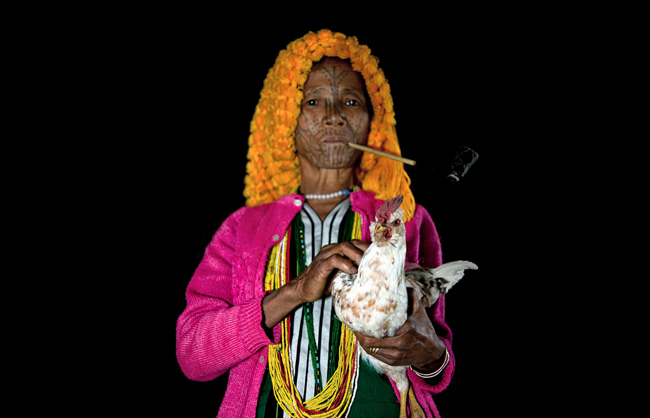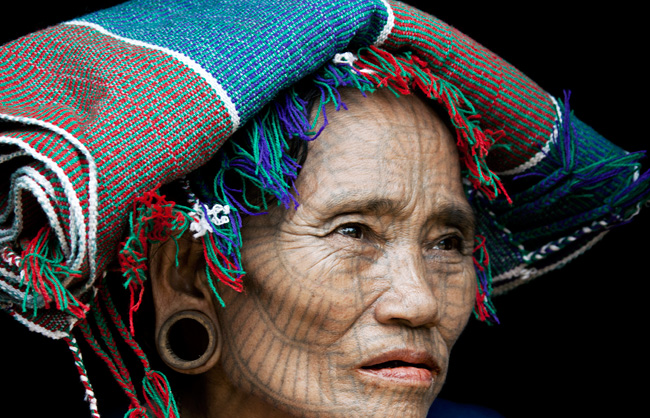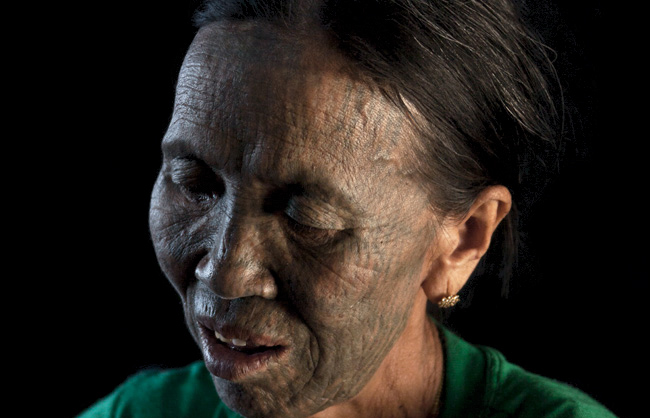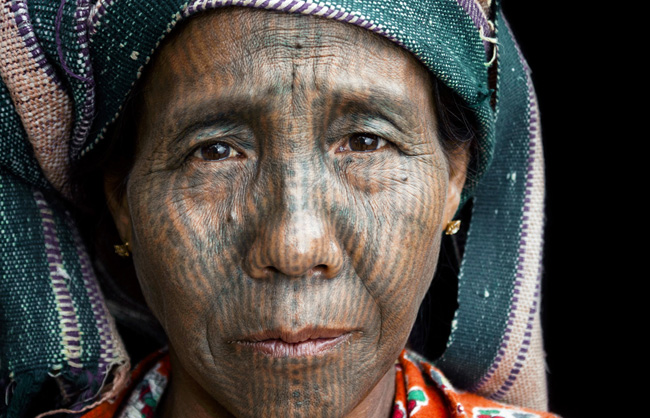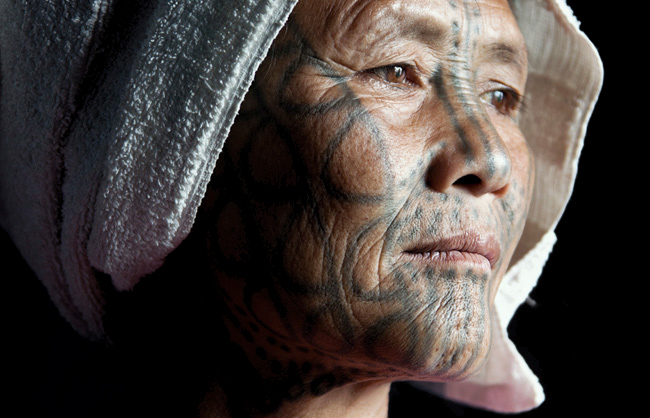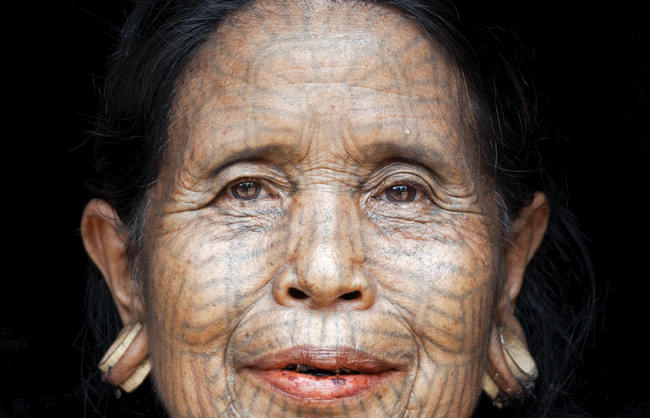Myanmar (Burma)
The Chin of Burma
The Chin of Burma
Where: Myanmar (Burma)
When: 2012
The Chin people are an ethnic group of Tibetan-Mongolian origin living mainly in the Chin State in western Burma. The Chin people have no written record of their history and traditions are transmitted orally from generation to generation. It appears that they came to Burma probably in the 9th and 10th centuries and moved westward to settle in the current Chin state around the 14th century.
For generations Chin women have tattooed their face according to an ancestral custom as a rite of passage to the adulthood. The ritual was officially banned by the military regime in the 1960s. Additionally the tattoos became increasingly rare because of conversion of previously animist communities into Christianity as a result of the missionaries work.
There are many legends explaining the tattooing custom. According to one of them the facial tattooing emerged as a way to « uglify » women to prevent them from being kidnap by the Burmese kings. Having no other means to defend themselves, the elders started tattooing the girls’ faces, thus depriving them of their famous beauty. The Chin women themselves think that this story have been invented recently as tourist attraction. According to elderly women who still remember more from the past, the facial tattoos were symbols of beauty and bravery as well as a mark of belonging to the community. Each of the 50 sub-ethnic groups among the Chin people have its own pattern for asserting belonging to its own clan.
Getting a full-face tattoo was extremely painful and girls between 11 and 15 years old have to be held down by other villagers in order to bear the terrible pain of the ritual. The ink used for tattoos came from plants that was mixed with pig fat. It was hammered into the skin with a pine needle. Most of the girls were terrified during the process and couldn’t open their eyes or speak for more than a week, due to the swelling. Many women report that they had no choice that to be tattooed. They had to obey their parents and clan's traditions.
Tattoos were sometimes performed by shamans as a protection against bad spirits. Shamans still have a lot of influence in the Chin community even if the majority of community members are Christians now. They still continue to consult shamans for chasing away bad spirits or bring good luck.
Nowaday, although the elder women still see tattoos as a symbol of beauty and affiliation to the community, they don’t want that young girls continue the tradition foreseeing that they might feel ashamed or be subject of ridicule just because they look different.
With the practice ceasing about two generations ago there are only a small amount of women who still bear the tattoos and when they will die this ancient tradition will die with them.
In the mean time, in this remote region of Burma dominated by military forces, the vanishing custom has turned these sleepy villages into a tourist attraction. Being forgotten by the central government and aware that their days are numbered the unusual-looking elders use their appearance to earn a little money and improve the life of their community. Even if the number of visitors is still relatively low, the tourists’ donations help to maintain local schools or medical services who desperately need investment after years of negligence from the government.


